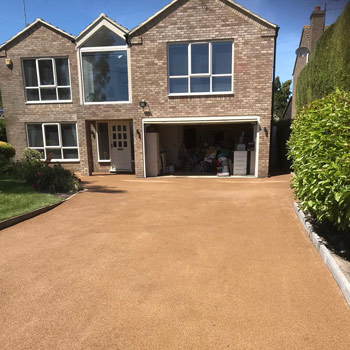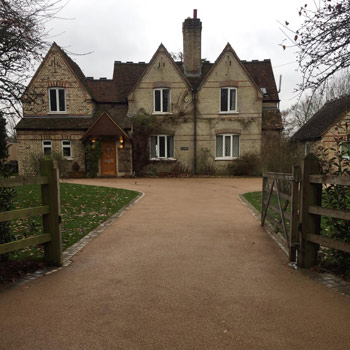Tarmac driveways are in demand for a reason. Thanks to their customisable, sleek look, they enhance the look of any home, but how long do they last? Keep reading to understand the lifespan of tarmac, including maintenance, repairs and replacements, to keep your driveway looking its best.
How Long Does Tarmac Last?
Tarmac can last up to 25 years or more, depending on how well it’s maintained and environmental conditions.
The exact lifespan of your tarmac driveway can vary based on factors like climate, traffic load and weight, as well as the quality of the initial installation. With regular care – such as inspections, filling cracks and addressing any drainage issues – tarmac can reach the upper end of this range.

Why You Should Leave Tarmac Installation to the Professionals
If you want tarmac to last as long as possible, you must install it properly. If you think laying tarmac is a simple weekend DIY project, you might be in for a surprise. It’s a job that demands the right skills, equipment and know-how.
While you might be tempted to save some cash by doing it yourself, tarmac installation involves ultra-detailed processes like grading, compacting and applying hot asphalt that require years of experience to get right.
Mistakes in laying tarmac cause uneven surfaces, poor drainage and much quicker wear and tear, ultimately costing you more money in repairs. For a smoother, longer-lasting finish, it’s always best to trust contractors with the expertise and tools to do the job safely and efficiently.
The Different Grades of Tarmac
Tarmac isn’t one-size-fits-all. Yes, there are different grades of tarmac for various applications and performance requirements. The grading of tarmac typically depends on factors such as the aggregate size, binder type and intended use. Common grades include:

- Stone Mastic Asphalt (SMA) – Best for high-traffic areas like roads and highways, SMA is heated to high temperatures, making it strong and long-lasting.
- Permeable Asphalt / Porous Asphalt – Ideal for driveways and car parks, this type lets water pass through, assisting drainage and reducing surface runoff. Thanks to a high void content, water can seep through easily, helping prevent flooding and supporting better water quality.
- Recycled Asphalt – Made from old asphalt, this eco-friendly choice is cost-effective and great for resurfacing projects, minimising waste and the need for new materials.
Extending the Life of Your Tarmac Driveway
A few expert tips on getting more years out of your driveway:
Reseal Regularly
Reseal over the years when you notice reduced quality or damage to protect against water, UV rays and stains.
Fix Cracks Fast
Fill cracks as soon as they appear to prevent them from growing into bigger problems like tyre-popping potholes.
Keep It Clean
Sweep away dirt and debris and clean oil spills quickly to prevent surface damage.
Protect the Edges
Avoid driving on the edges and consider adding stone or concrete borders for extra strength.
Prevent Water Pooling
Proper drainage is needed to keep water from sitting on your driveway, as this weakens the surface.
Maximise the Life of Your Tarmac Driveway
A tarmac driveway can last for decades, but, as you can see, it all comes down to proper care. Investing in professional tarmac installation and the right upkeep now means enjoying a long-lasting, durable surface that adds value and appeal to your home.